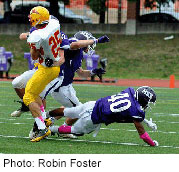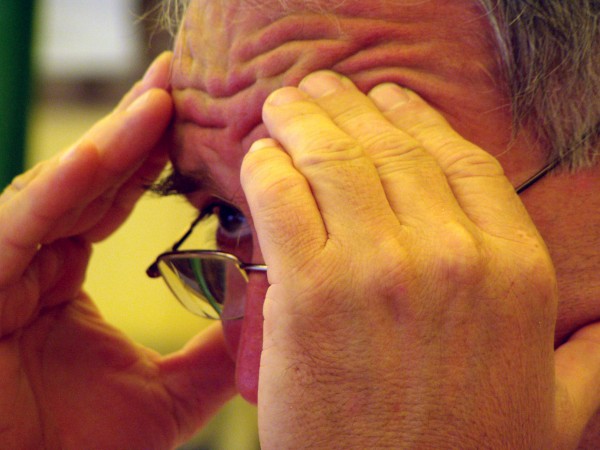
MONDAY, March 18 (HealthDay News) — Any athlete who suffers a suspected concussion should be withdrawn from play and stay on the sidelines until a qualified health care professional determines that all symptoms have subsided and it is safe to return to the field, new guidelines state.
Issued by the American Academy of Neurology, the latest recommendations aim to keep young athletes as safe as possible.
“With the older guidelines, we were trying to rate concussions at the time of the injury and predict recovery times, but now we know, ‘When in doubt, sit ’em out,'” said guideline co-author Dr. Christopher Giza, an associate professor of pediatric neurology and neurosurgery with the David Geffen School of Medicine at the University of California, Los Angeles, and Mattel Children’s Hospital.
“The point is that no single quick test is really a litmus test for a concussion,” he said. “We know now that we need to make sure a player has had a thorough and proper evaluation, involving a symptoms checklist, a standardized assessment and balance and cognitive testing, before being returned to play. This evaluation has to be done on a case-by-case basis, so each person goes through an individualized recovery process.”
Giza and his colleagues reported the new guidelines in the March 18 online issue of the journal Neurology.
According to the academy, upwards of 1 million professional and amateur U.S. athletes suffer a concussion every year.
The new guidelines were issued following a thorough look at all the available concussion research through June 2012.
Among the conclusions: experiencing a concussion raises the risk for experiencing a second, and perhaps more debilitating, one. That risk was found to be highest in the 10 days following the initial injury.
One expert said the new guidelines are needed.
“One of the big problems is that we have a culture within many sports that still encourages young people to play through the pain, including head pain,” said Dr. Gail Rosseau, a clinical assistant professor in the department of neurosurgery at the Northshore University Health System in Chicago.
“But one of the most important things we now know is that until those who have had one concussion are fully recovered they are more likely to have a second concussion,” Rosseau said. “The stories we hear that are horrific to every parent and every coach is the child who gets a concussion and goes back to play too soon, and gets a second one with devastating consequences.”
Just how devastating it can be was outlined earlier this year in the Journal of Neurosurgery: Pediatrics, which detailed the harrowing double-concussion experience of Indiana high school student Cody Lehe. Resuming football too soon after an initial concussion, Lehe suffered a second concussion. Severe brain injury ensued, leaving Lehe mentally impaired and largely wheelchair-bound.
“When athletes are sent back to play with a concussion, it’s because they didn’t know they had one or people recognized it but didn’t do anything about it,” Giza said. “We have to educate trainers, physicians and players so no athlete comes back too quickly or arbitrarily.”
To that end, the new guidelines call for trained health professionals to quickly and methodically look for any of the telltale signs of a concussion, including: a headache; light and sound sensitivity; poor balance, coordination and reaction time; speech, sleep or memory disturbances; and, less commonly, a loss of consciousness.
Alongside such symptoms, a custom-tailored recovery plan should take into account a patient’s prior concussion history and his or her age. The guideline authors emphasized that younger patients typically need longer recovery periods, and cautioned caregivers to handle patients of high school age and below more conservatively in terms of allowing any return to play.
Across team sports, football (for which well-fitting helmet use is encouraged) was deemed the riskiest activity, alongside rugby. They were trailed overall by hockey and soccer, while the highest risk among girls was pegged to soccer and basketball.
But team sports are just part of the story, Rousseau said.
“The activity that causes the most head injuries is not football,” she said. “[It’s] not hockey. It’s biking. In terms of raw numbers, the biggest group of concussions hitting emergency rooms is cyclists. Nobody is talking about getting rid of bikes. We need to talk about making all sports safer, and that includes individual sports.”
The National Football League Players Association, the American Football Coaches Association, the Child Neurology Society, the National Association of Emergency Medical Service Physicians, the National Association of School Psychologists, the National Athletic Trainers Association and the Neurocritical Care Society have all endorsed the new guidelines.
More information
For more on concussions, visit the American Academy of Neurology.

